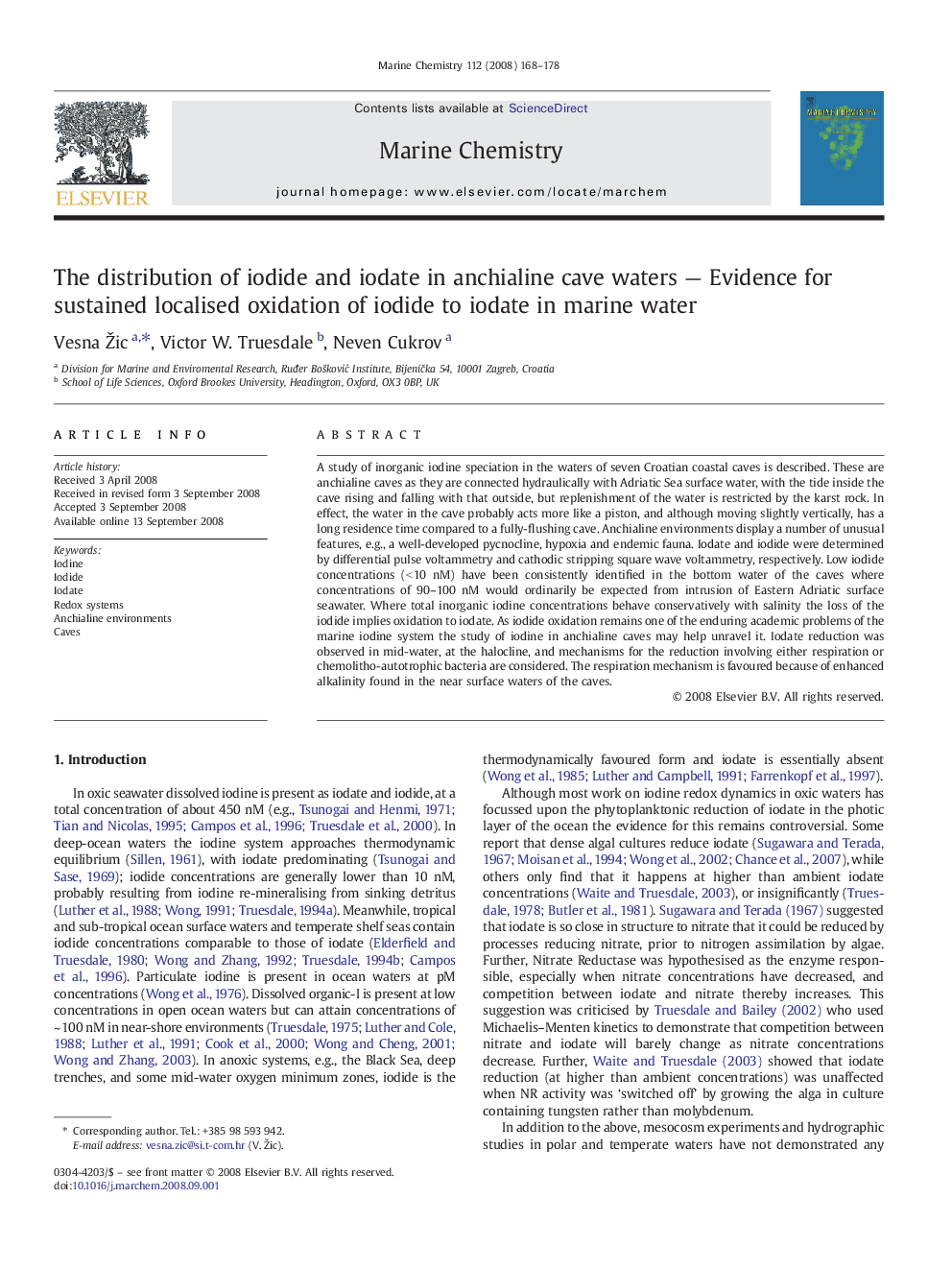| Article ID | Journal | Published Year | Pages | File Type |
|---|---|---|---|---|
| 1261954 | Marine Chemistry | 2008 | 11 Pages |
A study of inorganic iodine speciation in the waters of seven Croatian coastal caves is described. These are anchialine caves as they are connected hydraulically with Adriatic Sea surface water, with the tide inside the cave rising and falling with that outside, but replenishment of the water is restricted by the karst rock. In effect, the water in the cave probably acts more like a piston, and although moving slightly vertically, has a long residence time compared to a fully-flushing cave. Anchialine environments display a number of unusual features, e.g., a well-developed pycnocline, hypoxia and endemic fauna. Iodate and iodide were determined by differential pulse voltammetry and cathodic stripping square wave voltammetry, respectively. Low iodide concentrations (< 10 nM) have been consistently identified in the bottom water of the caves where concentrations of 90–100 nM would ordinarily be expected from intrusion of Eastern Adriatic surface seawater. Where total inorganic iodine concentrations behave conservatively with salinity the loss of the iodide implies oxidation to iodate. As iodide oxidation remains one of the enduring academic problems of the marine iodine system the study of iodine in anchialine caves may help unravel it. Iodate reduction was observed in mid-water, at the halocline, and mechanisms for the reduction involving either respiration or chemolitho-autotrophic bacteria are considered. The respiration mechanism is favoured because of enhanced alkalinity found in the near surface waters of the caves.
